 (modifié de Coste, Flore de la France 1937) :
(modifié de Coste, Flore de la France 1937) :
Plante bisannuelle de 30-60 cm, velue-hérissée, à racine épaisse et dure ; tige raide, arrondie, pleine, simple
Écologie : (répartition d'après la flore) Bois et coteaux pierreux du Sud-Est : Lyonnais, Dauphiné, Provence, Gard; parfois subspontané autour des habitations.
Répartition hors de France : [premières signalements en Lozère 2021, dont 3 stations] Spontané dans l'Italie septentrionale et centrale ; naturalisé dans l'Europe méridionale.
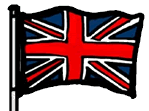 (modified from translated Coste):
(modified from translated Coste):
NOTE: the French text is more complete and up-to-date
Biennial plant of 30-60 cm, hairy-bristly, with thick and hard root; stem stiff, rounded, full, unbranched
Ecology UK: Not native to the UK. France: Woods and stony hillsides of the South-East: Lyonnais, Dauphiné, Provence, Gard; sometimes subspontaneous around dwellings.
Distribution outside France: [first reports in Lozère 2021, including 3 stations] Spontaneous in northern and central Italy; naturalized in southern Europe.
Flowering France: May-July.
Fleurs : d'un bleu violacé, dressées, en grappes assez longues; pédoncules à 2 bractées aussi longues que les sépales; calice hispide, muni de 5 appendices réfléchis aussi longs que le tube, à lobés ovales-lancéolés; corolle très grande (4-5 cm), à lobes peu profonds, non barbus; 5 stigmates (d'après Christian Bernard, pas toujours 5 ; les 2 stations chez nous montrent que 3 stigmates : voir les fruits)
Floraison France : Mai-juillet.
Flowers: purplish-blue, erect, in fairly long clusters; peduncles with 2 bracts as long as the sepals; calyx hispid, with 5 reflected appendages as long as the tube, with oval-lanceolate lobes; corolla very large (4-5 cm), with shallow lobes, not bearded; 5 stigmas (according to Christian Bernard, not always 5; the 2 stations in Lozère all possess just 3 stigmas: see the fruits)

 Canterbury Bells
Canterbury Bells
 Campanule à grandes fleurs
Campanule à grandes fleurs
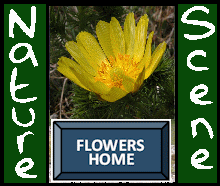


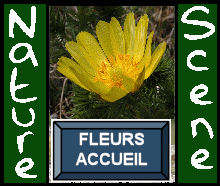
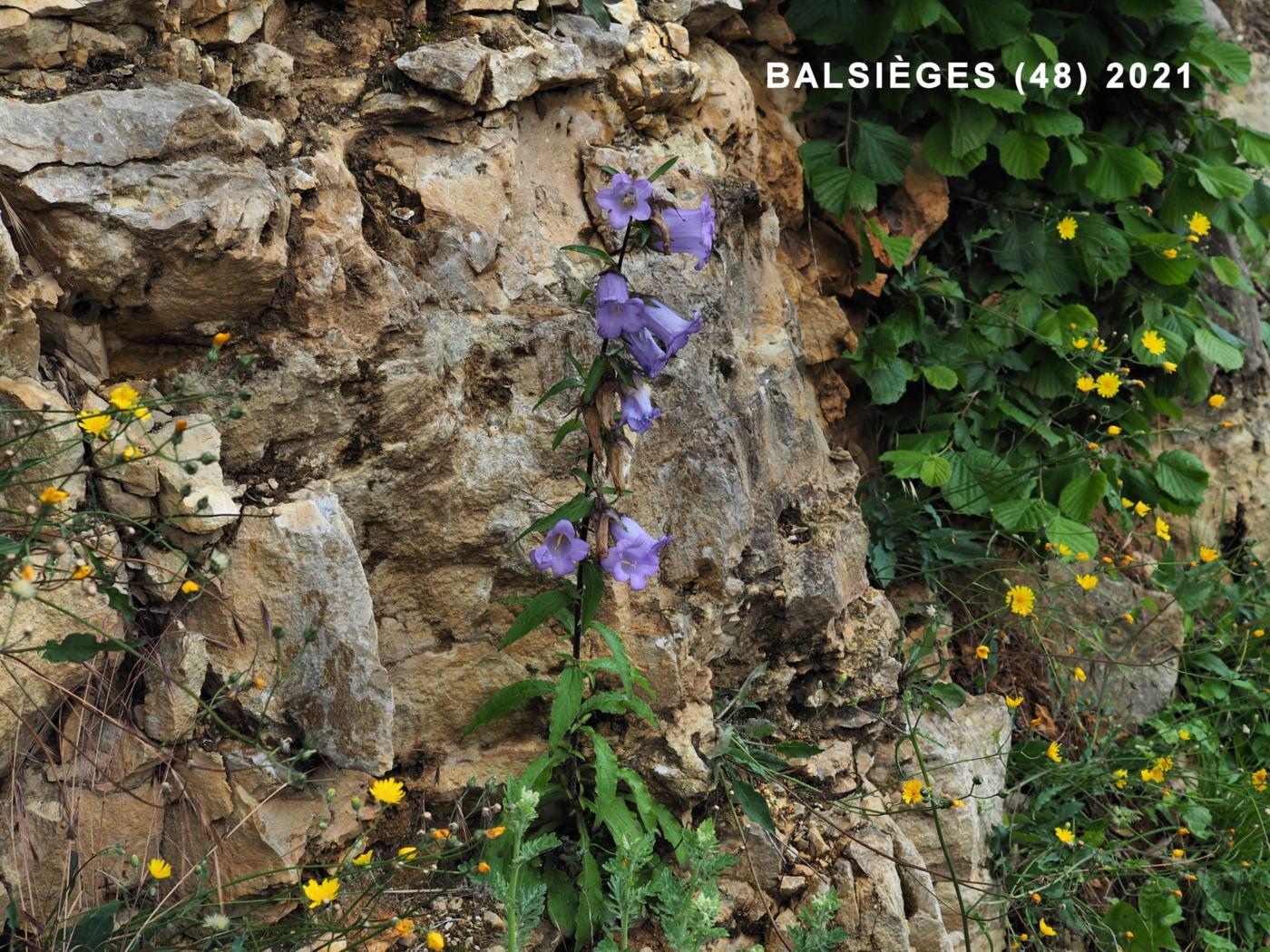
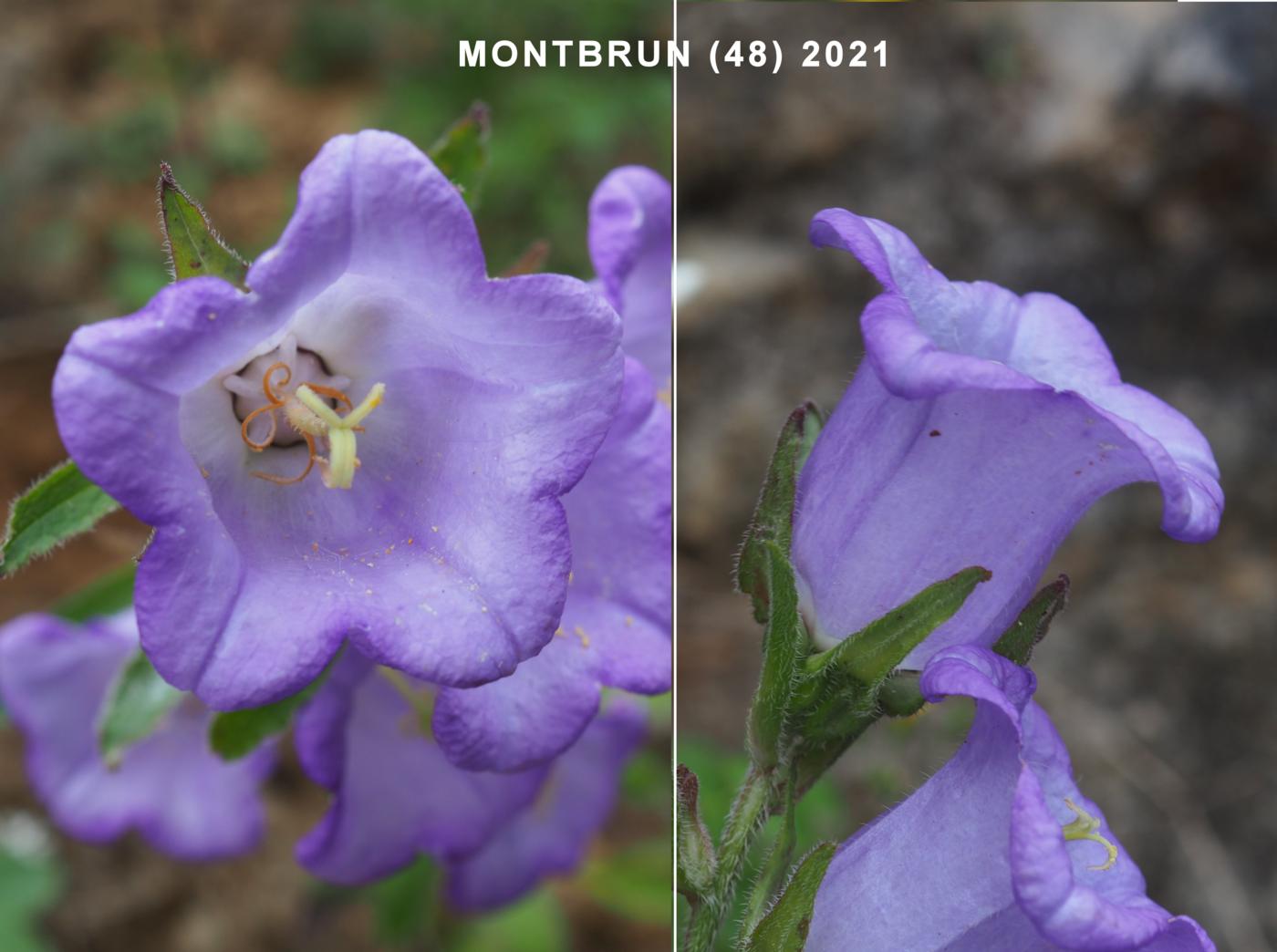
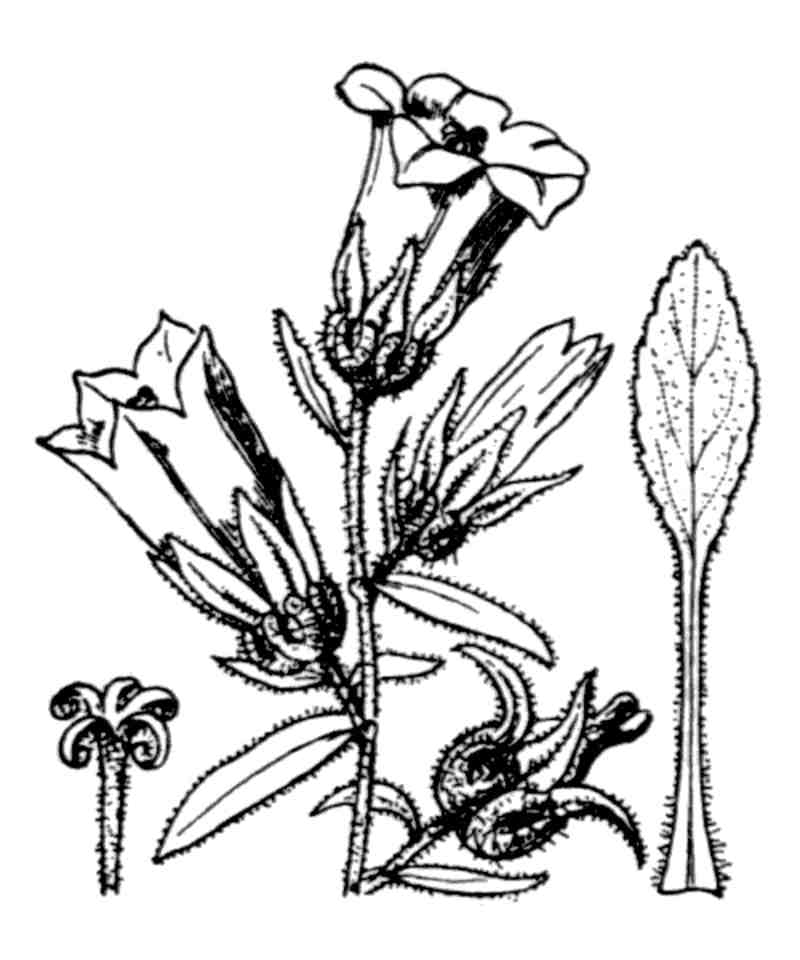
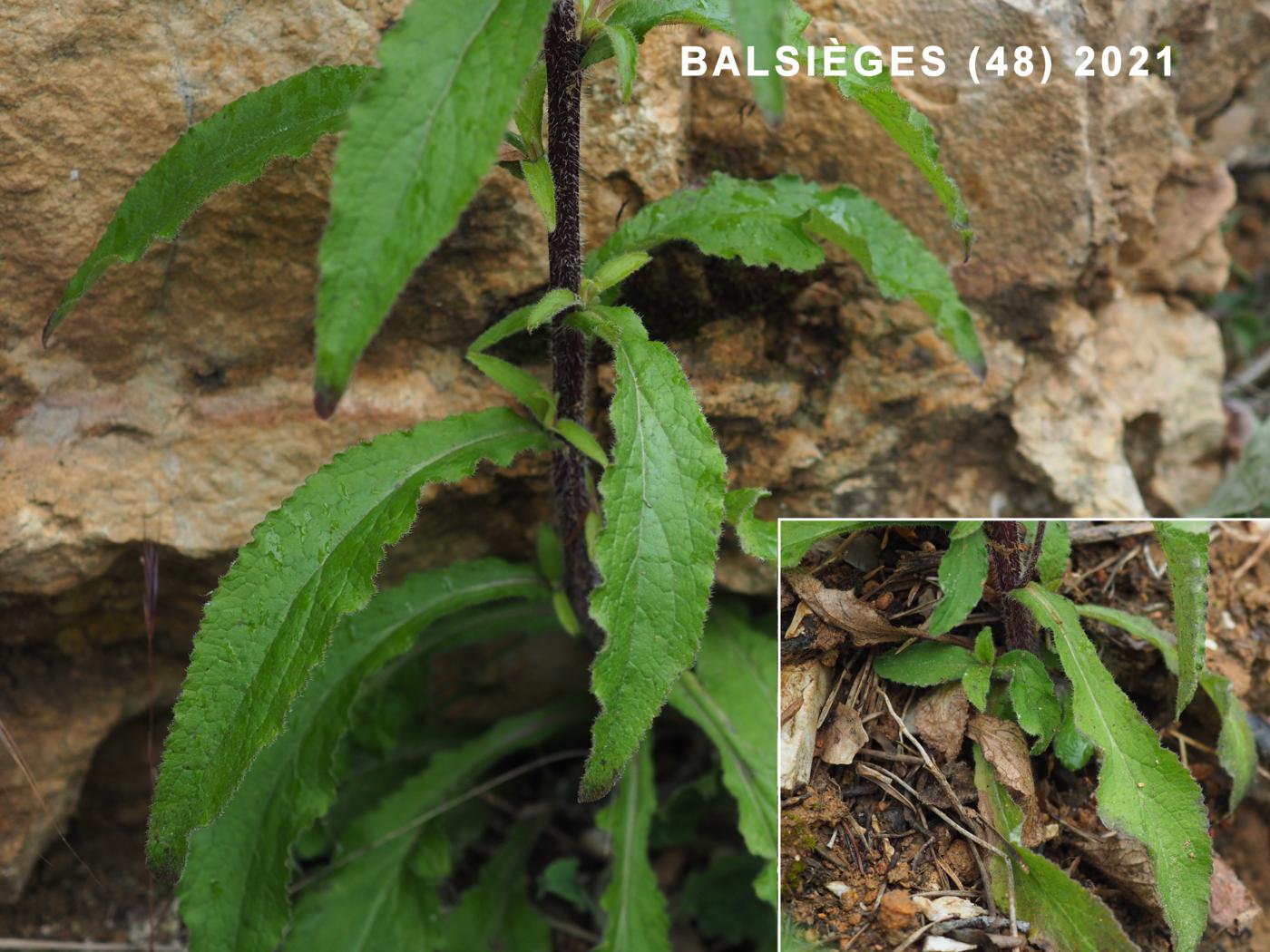
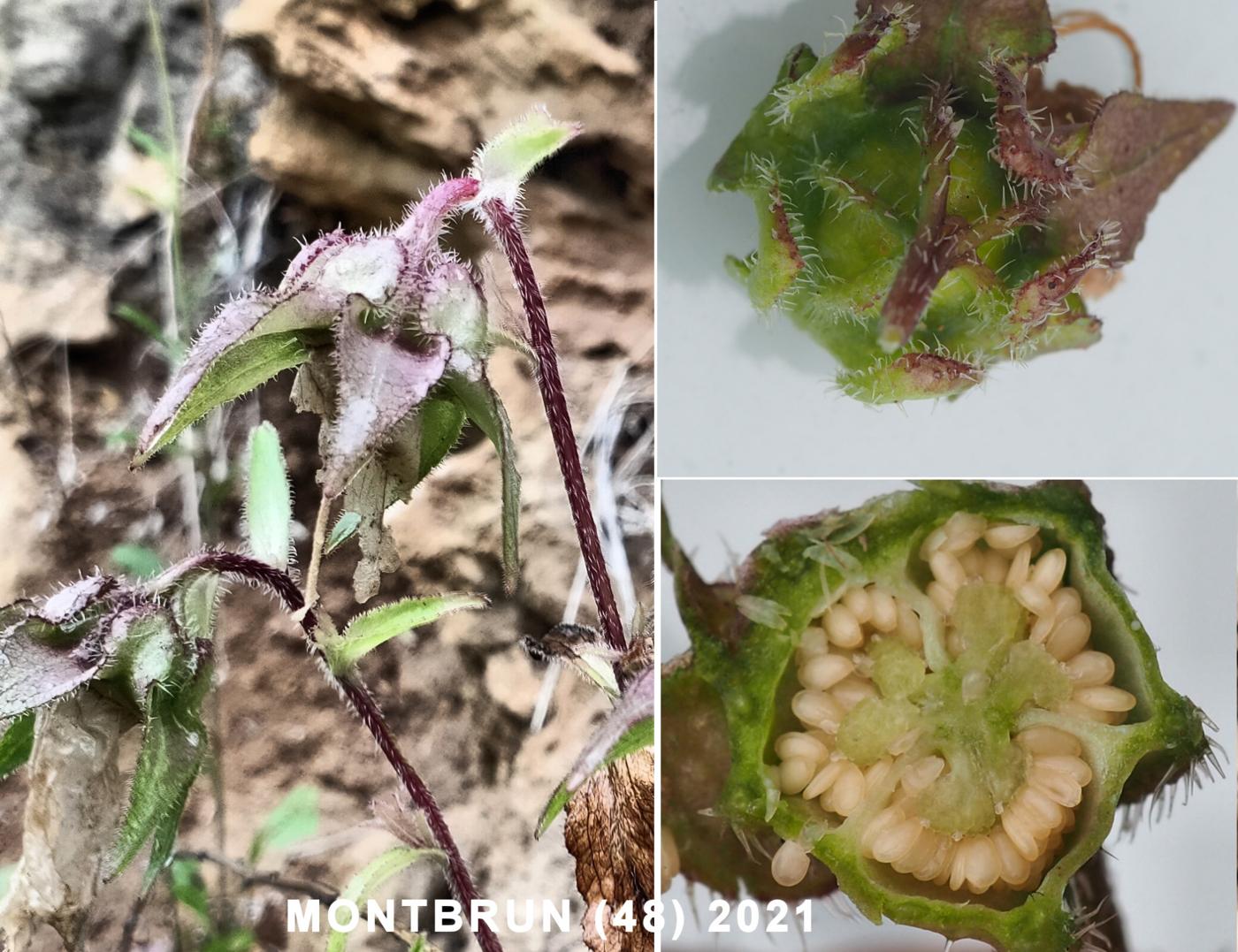
 Please
consider
Please
consider 











